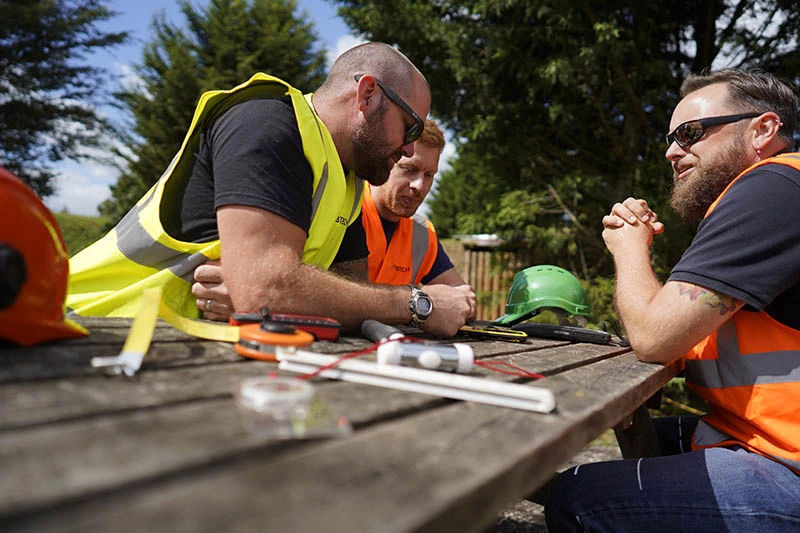
Characterisation of Historic and Heritage Landscape
Between fields and streets, hedgerows and settlement patterns, the landscape makes up the environment and tells us a lot about the area’s history.
Whenever a development is proposed, the local authorities want to be sure that all historic influences are properly understood before they agree to any level of change.
Specific types of assessments exist to cater for certain elements that need to be kept, even after significant development work. In the case of heritage areas, a historic landscape characterisation (HLC) would be the most suitable solution.
An HLC analyses how a location has evolved, what makes it distinctive, and how the qualities can be protected or enhanced. The results then give planning officers evidence that the development scheme is sensitive to the historic environment.
What is a Historic Landscape Characterisation?
Also sometimes known as a heritage landscape characterisation, a historic landscape characterisation (HLC) is a tool used to evaluate the historical development of a landscape. With it, developers and other stakeholders in the planning process can map the site’s features, patterns and time-depth.
The concept of the HLC was pioneered by Historic England and has been applied across the UK to support both the universal requirements of large-scale planning frameworks and the bespoke needs of individual sites.
Unlike other more general landscape appraisals, an HLC brings all historic context into focus, showing how the modern landscape has been shaped by centuries of human activity.
How HLC Fits into Other Services
Instead of being a standalone service, a historic landscape characterisation will usually be an element of another service, such as landscape surveys or archaeology surveys.
For example, HLC data can feed directly into an environmental impact assessment (EIA) or a landscape and visual impact assessment (LVIA). From there, the results could be presented as an interactive map, giving design teams and English Heritage stakeholders clear evidence for crucial decision-making.
Who Would Need a Historic Landscape Characterisation?
In terms of the people who would typically need an HLC, the common clients include:
- Developers Preparing Large-Scale Masterplans
- Estate Managers Seeking to Balance Conservation with Development
- Infrastructure and Energy Providers
- Local Planning Authorities Building Evidence Bases
Whatever the case, HLC projects give decision makers confidence that proposals are sensitive to historic character and wider English heritage.
Effects of an HLC on a Planning Project
By demonstrating the context of the change caused by the development, an HLC helps to reduce the likelihood of a planning objection during the planning application process, inform heritage-led design, and generally smooth the planning process in various aspects and stages.
The involvement of an HLC will show compliance with national policy and align with the parameters of relevant regulations and organisations, especially English Heritage and Historic England.

Using Historic Landscape Characterisation in Your Plans
A completed historic landscape characterisation programme gives you a clear picture of how the land has changed over time and what makes it distinctive.
Adding this information to your plans helps you to demonstrate to the local authority that your scheme avoids unnecessary objections, fits its context, and makes the planning process as smooth as possible.
Stages in the Characterisation Process
Over the course of a historic landscape characterisation, the methodology is consistent but flexible. It usually includes the following steps:
- Creation of an Interactive Map as a GIS Dataset
- Desk-Based Research Drawing on Aerial Photographs, Archives and Historic Maps
- Classification of Landscape Units into Attributes and Types
- Analysis of Historical Development and Time-Depth
- Mapping of Boundaries and Character Areas
- Assessment of Legibility and Sensitivity of the Modern Landscape
Outcomes
At the end of HLC, the final deliverables could include digital GIS data, mapping outputs and a written report.
All of the results will show consideration of the historic environment, support sustainable management of change, and prove that there are ways for the developer to work concerns around heritage into the plans of the development.
How Arbtech Can Help
Following years of providing countless clients all over the country with a wide range of different surveys to support planning, Arbtech is the perfect candidate for managing your historic landscape characterisation project. Our department for landscape surveys is full of consultants with extensive experience in reviewing landscape character, judging key areas and assets, and ensuring that developments continue as planned while retaining, repairing or enhancing them.
The landscape consultants in our ranks have worked on HLC projects of all types and seen almost every possible outcome, so by choosing our team, you will be in good hands and remain within the guidelines of Historic England, English Heritage and other applicable governing bodies. Get a free quote for historic landscape characterisation on your site by calling us, filling out a quote form or emailing us.


